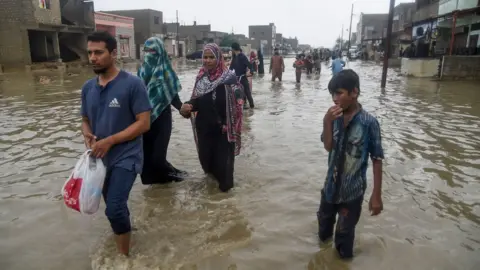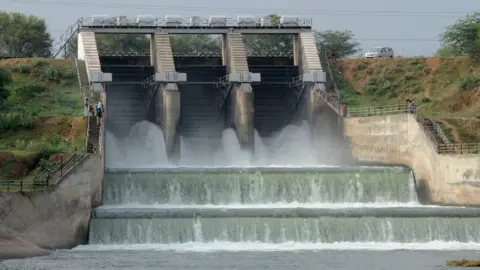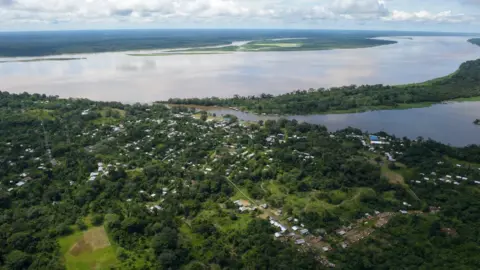Asia floods: How can the damage be reduced?
 Getty Images
Getty ImagesThere's been a lot of destruction caused by floods across Asia.
Countries such as India, Bangladesh, Pakistan, Nepal and Vietnam have seen hundreds of homes destroyed and lives lost.
Every year, widespread flooding and landslides happen a lot between the months of July and September - also known as the monsoon season.
So how can this widespread damage be reduced?
Dr Tobias Börger is an environmental economist at the University of Stirling researching flood infrastructure in Vietnam and he explains what could potentially help.
Grey infrastructure
Dr Börger tells Radio 1 Newsbeat governments use structures such as dams and dykes to control the amount of water that flows around.
"There's also stuff that's built higher up and sewage systems so rain and water can drain more quickly."
They are known as grey infrastructure "because they are grey".
"These are quite effective as they reduce the flood risk impact," he adds.
But these "engineered solutions" are quite "expensive to maintain" which means unless there is constant investment they won't be as effective as they should be in stopping floods.
 Getty Images
Getty ImagesBlue and Green solutions
However, there are also more natural, non-concrete options, according to Dr Börger.
These are called blue and green infrastructure which focus on building vegetative river banks and wetlands - a system of plants and water - and more green areas "to reduce flood risk and potential flood impact" - because it means rainwater can enter the ground more easily.
Dr Börger says Vietnam has normal "hard infrastructure" flood protections, but they still suffer from flooding, so other options should be considered.
He adds that this option "might not work as well as hard infrastructure" but that it's still an option which can help.
There are also environmental benefits of blue and green infrastructure such as cleaner air.
 Getty Images
Getty ImagesWhere are countries going wrong?
It's not that countries don't have any flood protections, but sometimes, they aren't managed very well.
A report by the South Asia Network on Dams, Rivers and People found there was a mismanagement of dams in two states in India - Maharashtra and Karnataka - which contributed to worsening floods.
And some neighbouring countries such as India and Nepal have had major disagreements over river water cooperation causing both of them serious flood damage.
 Getty Images
Getty ImagesDr Börger also suggests governments should have better planning rules to prevent flood damage.
There are usually lots of people, businesses and houses located in flood prone areas which increases the destruction suffered.
"One way to reduce that risk is to have stricter development laws, and to not allow people to build in flood prone areas.
"That's the side of flood damage which can be controlled."
And what's actually causing the flooding?
"There are three different types of flooding that can happen - rain, river and coastal," Dr Börger says.
Areas that have a long coastline - such as India and Vietnam - are at risk of suffering from all three types.
"It gets really tricky when you have two or three types of flooding occurring at the same time. Rivers are running high and on top of that you get really hard and heavy rain."


